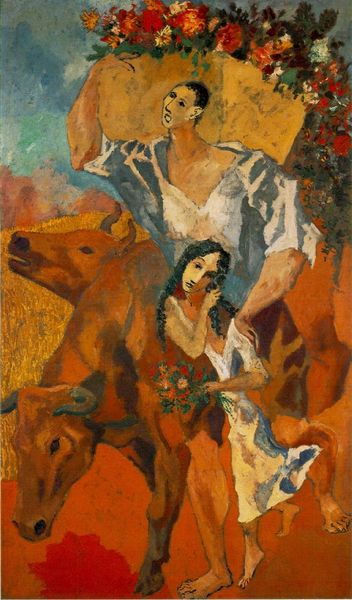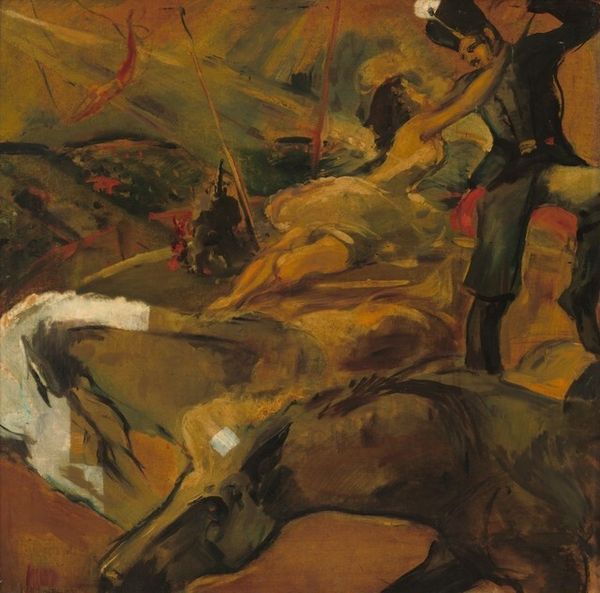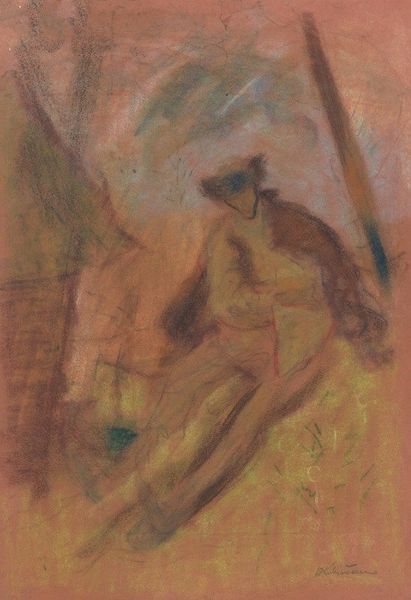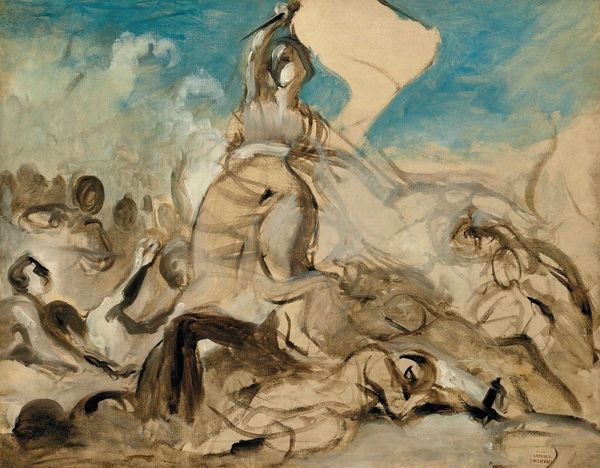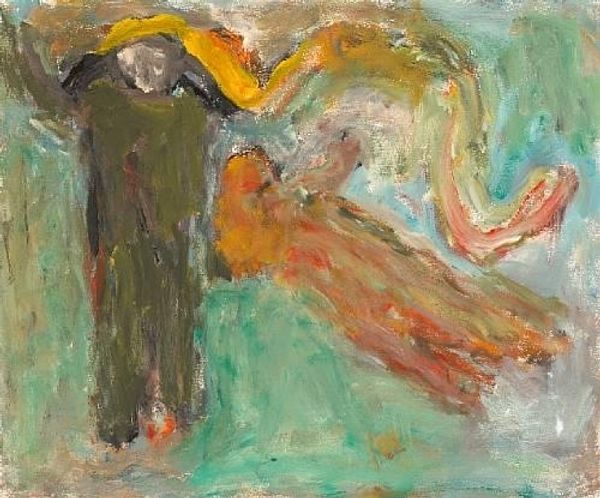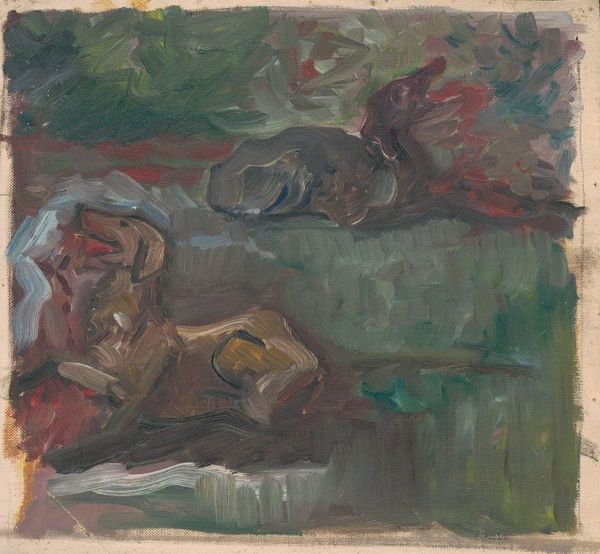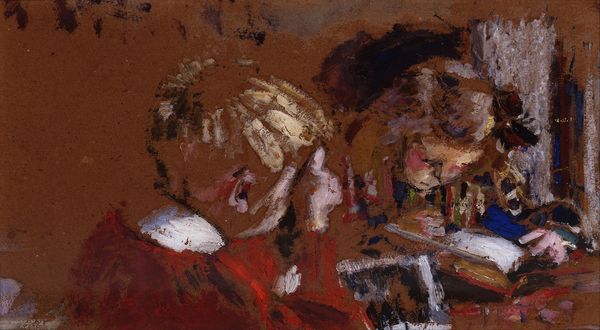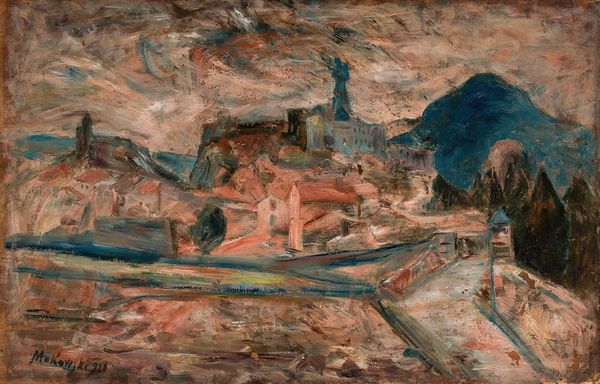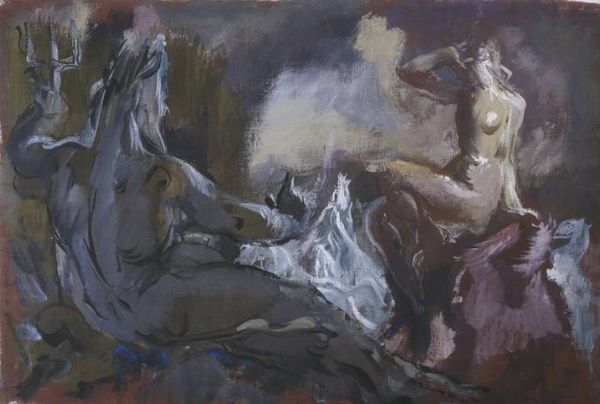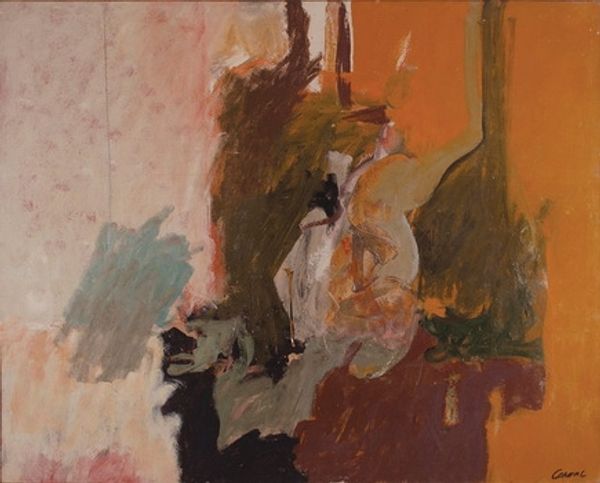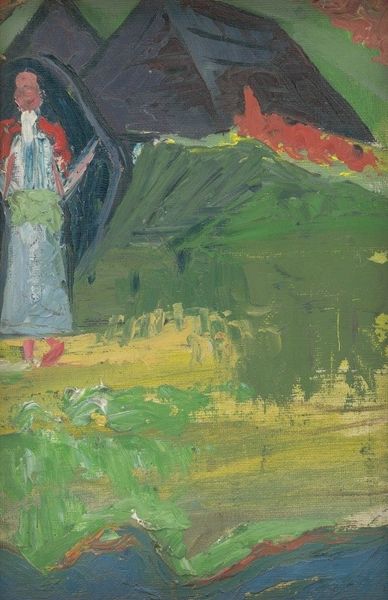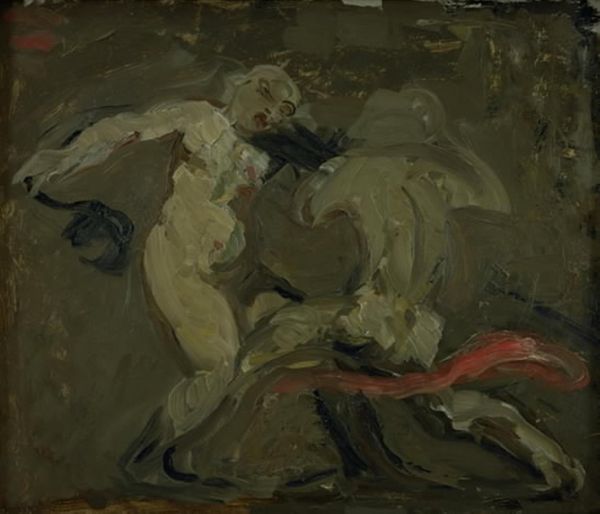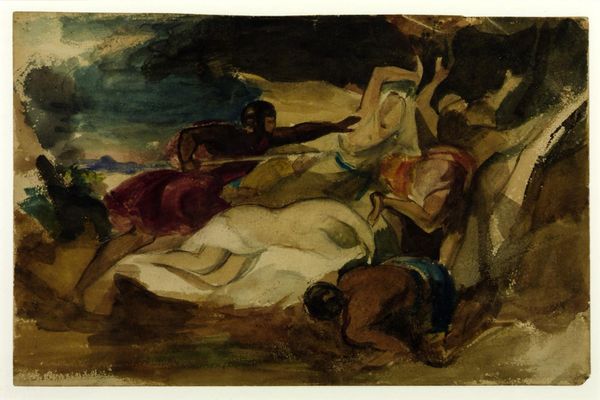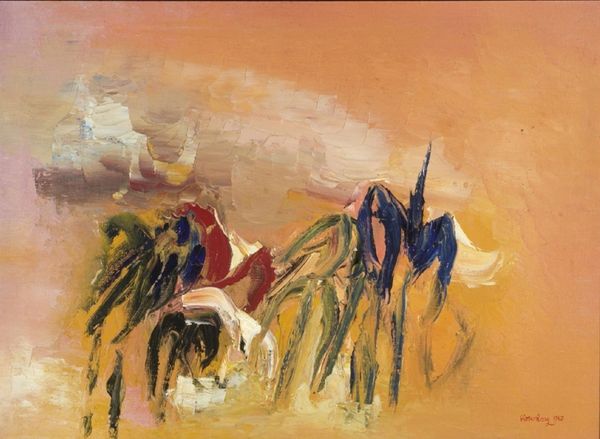
panel, painting, oil-paint
#
portrait
#
panel
#
painting
#
oil-paint
#
landscape
#
figuration
#
oil painting
#
group-portraits
#
modernism
Dimensions: overall: 61 x 81.3 cm (24 x 32 in.)
Copyright: National Gallery of Art: CC0 1.0
Curator: What an enigmatic painting this is. It's an untitled work, known as "(three girls in a landscape)," rendered in oil paint on panel sometime between 1933 and 1934 by Mark Rothko. Editor: It strikes me immediately as melancholic. The figures seem isolated despite their proximity. The colors are muted, almost as if viewed through a haze of memory. Curator: Absolutely. Rothko's early figurative paintings often possess a somber, contemplative quality. Notice the composition; three figures arranged somewhat statically within a vast landscape. Do you find any potential symbolism in this organization? Editor: Perhaps the landscape represents the external world, pressing in, while the figures embody internal states of being? It could represent societal pressures bearing down. They almost look resigned. Given the time period, the rise of fascism in Europe, perhaps there's a commentary on the anxieties of a generation on the brink of war? Curator: A very perceptive reading. We also have to remember that landscape, symbolically, is often a mirror of internal, psychological space, as you suggested. Furthermore, groups of three are of particular note when viewed through an iconographic lens. It calls to mind triads—historical, religious, mythical—present in countless cultures. Consider also, the figures’ faces—almost mask-like in their lack of clear features, they convey an anonymity, representative perhaps, of any three women, anywhere. Editor: So, moving away from that generality to this particular rendition; is Rothko specifically nodding to those historical, religious, and mythical triads or perhaps critiquing their frequent elisions? Or their erasures of women? Their burdens? Curator: It’s tempting to try to make very particular associations with classical images, yet perhaps more profoundly, the triad functions here as a fundamental image, rooted in memory, as you mentioned. I think Rothko provides the means and invitation for introspection above didactic declarations. Editor: I find this positioning of figures interesting in Rothko's work, given the direction his art later took. Away from the human figure, instead towards these towering blocks of color. Curator: This feels like a valuable turning point. Seeing Rothko grappling with the human figure, struggling perhaps, to convey internal experience before distilling emotion down into those famous abstract blocks, gives this a great depth. Editor: For me, it resonates as a powerful reminder of the complexities inherent in navigating a world filled with uncertainty and historical anxieties. Curator: And I'm struck again by its almost dreamlike quality; those hazy colors leaving us to wonder, what truths lie within this quiet scene.
Comments
No comments
Be the first to comment and join the conversation on the ultimate creative platform.
